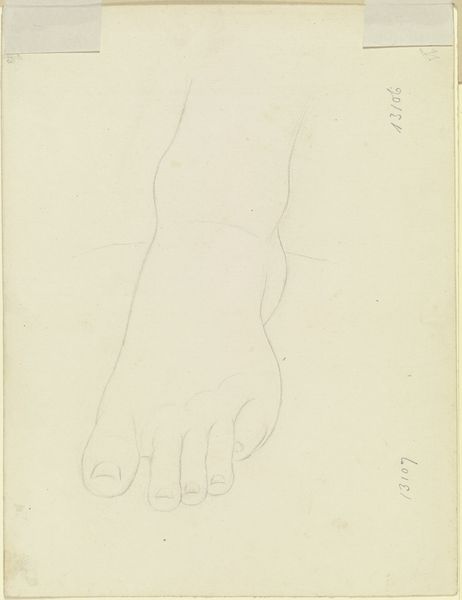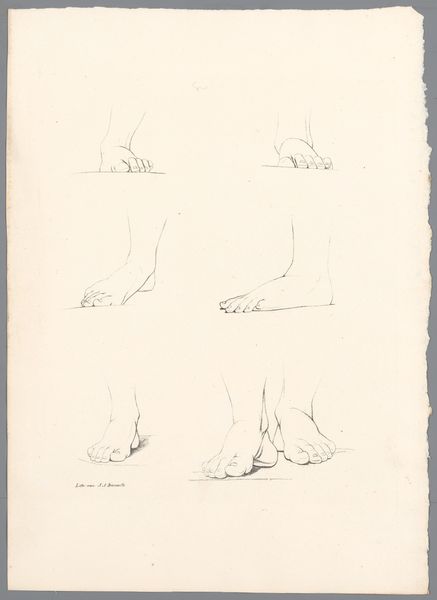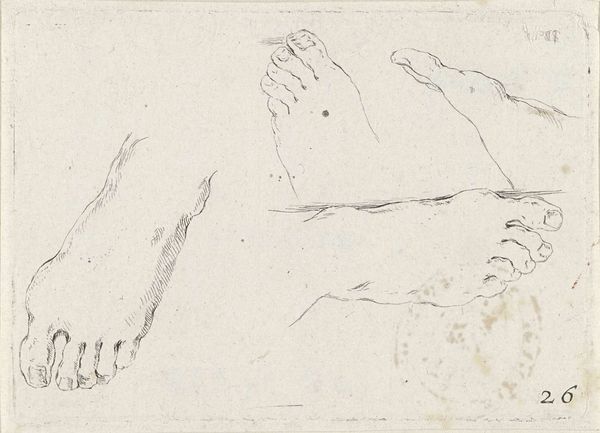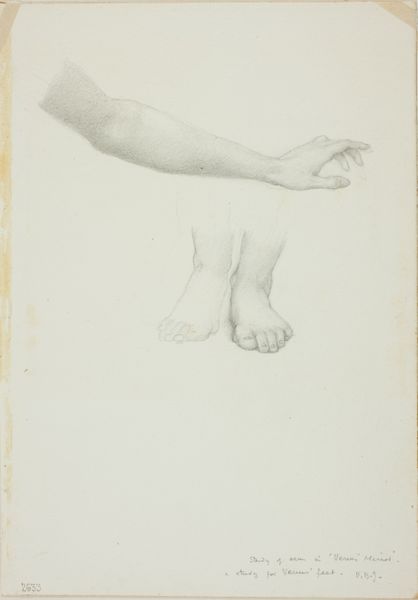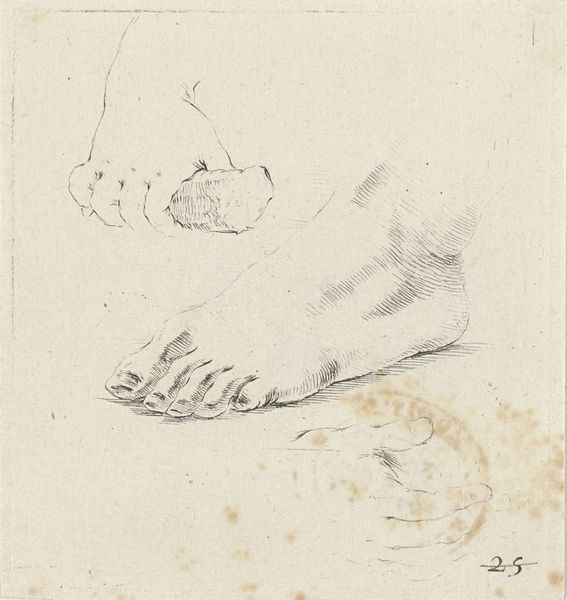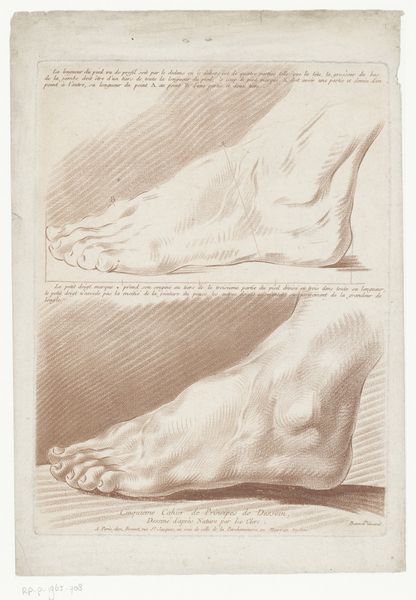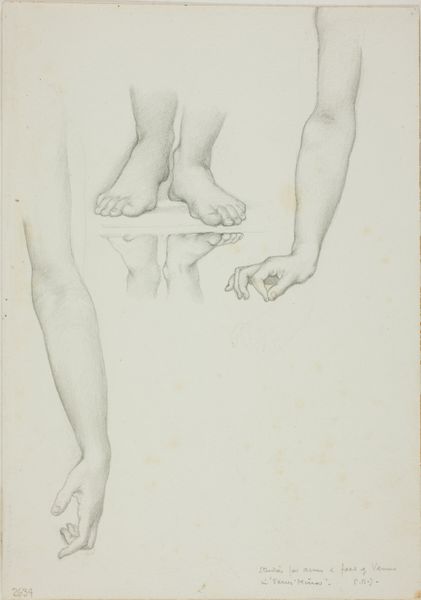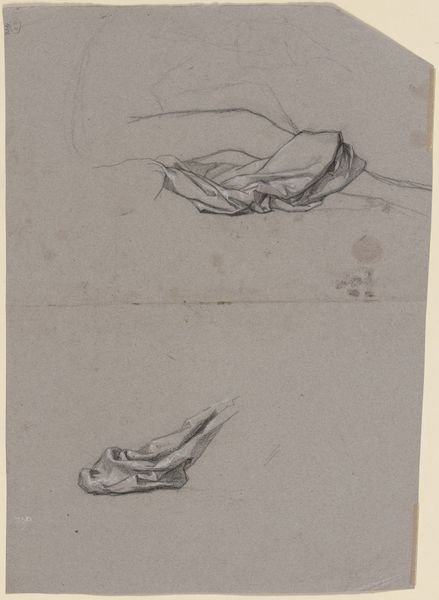
drawing, pencil
#
portrait
#
drawing
#
medieval
#
pencil sketch
#
figuration
#
pencil
#
academic-art
#
realism
Dimensions: height 420 mm, width 265 mm
Copyright: Rijks Museum: Open Domain
Jean Augustin Daiwaille sketched 'Hand en twee voeten' with pen in brown and gray ink on paper sometime in the first half of the 19th century. Daiwaille, who came from a family of artists, devoted much of his career to portraiture, printmaking, and teaching. The image is a detailed study of the human form that reflects the 19th century's broader interest in scientific observation and anatomical study. This drawing allows us to consider the body as a site of both knowledge and identity. During this period, the body was often examined through the lens of race and gender, leading to pseudo-scientific theories that reinforced existing social hierarchies. In exploring these images of the hand and feet, we might reflect on the labor and movement they enable, and how those actions are shaped by one's identity and social position. What does it mean to represent these parts of the body with such precision, and how might it speak to the power dynamics inherent in how we perceive and understand one another?
Comments
No comments
Be the first to comment and join the conversation on the ultimate creative platform.
